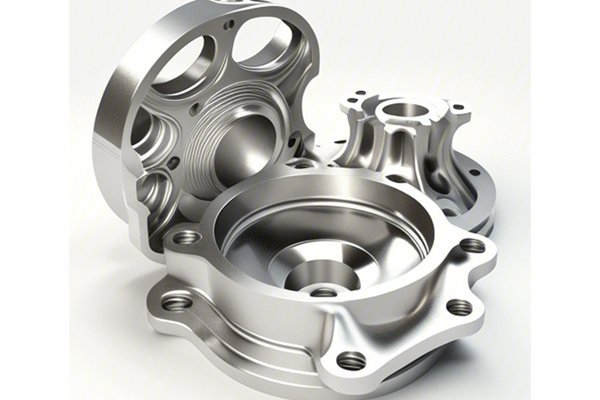Have you ever wondered how top-tier manufacturers bring life to innovative product designs while ensuring functionality? According to a study by the McKinsey Global Institute, companies that adopt digital fabrication techniques, including CNC (Computer Numerical Control) machining, can reduce product development times by up to 75%. That’s not just impressive; it underscores the pivotal role CNC prototypes play in today’s manufacturing landscape, especially in verifying the functional design of products.
In this blog, we will delve deep into how CNC prototypes aid in product design verification, the essential steps to creating effective prototypes, the advantages of using CNC machining, and best practices for your prototype development process. By the end, you’ll understand not only the importance of CNC prototypes but also how you can leverage this technology for improved product outcomes.
What is CNC Prototyping?
CNC prototyping is a process that involves creating a physical representation of a digital design using CNC machines. These prototypes are crucial for testing, validating, and verifying the functionality of a product design before mass production. CNC machining involves manipulating materials like metals, plastics, and composites using computer-controlled tools to achieve the desired shape and specifications set in a CAD (Computer-Aided Design) program.
The Importance of Verifying Functional Design
In product development, verifying a design’s functionality is crucial for multiple reasons:
How CNC Prototyping Works
Step 1: Concept Development
The first step in using CNC prototyping for functional design verification is conceptualizing the product. This step usually involves brainstorming ideas, sketching designs, and deciding on key features and functions that the prototype must demonstrate.
Step 2: Design Creation Using CAD Software
Once a concept is chosen, designers create a detailed digital model using CAD software. This digital model serves as the blueprint for the CNC machine. Important aspects to include in the CAD design are dimensions, tolerances, surface finishes, assembly methods, and materials.
Step 3: CNC Machining Process
With the CAD design ready, the next step is to translate that design into tangible form using a CNC machine. The machine interprets the digital file and uses its tools—like drills, lathes, or milling machines—to carve or reshape the material according to the design closely.
Step 4: Quality Control and Testing
After the prototype is created, it undergoes a thorough quality control and testing process. This may include dimensional checks, functional tests, and aesthetic evaluations to ensure that the prototype meets both design specifications and functional requirements.
Step 5: Feedback and Iteration
The next step after testing is gathering feedback from stakeholders or users. This feedback may lead to modifications in the design, which requires the process to iterate back to the CAD or machining stages. This cyclic approach allows for precise refinement of the product until it meets all performance and usability standards.
Advantages of CNC Prototyping

Best Practices for CNC Prototyping
Real-World Applications of CNC Prototyping
Let’s explore some industries where CNC prototyping plays a pivotal role in verifying functional designs:
Aerospace
In aerospace engineering, where safety and precision are paramount, CNC prototypes enable engineers to test parts for aerodynamics and weight distribution before they go into production.
Automotive
Automotive manufacturers use CNC prototypes to verify the functionality of components such as engine parts, brakes, and other critical systems, ensuring they meet high safety standards.
Medical Devices
Precision is crucial in medical devices, and CNC prototyping allows for thorough testing of designs for surgical tools, implants, and diagnostics equipment.
Consumer Electronics
From smartphones to household appliances, CNC prototyping helps verify the functionality and usability of their designs, ensuring user satisfaction upon release.
Limitations of CNC Prototyping
While CNC prototyping is an invaluable tool, it is not without its limitations:
In summary, CNC prototypes serve as a powerful solution for verifying the functional design of products, providing manufacturers with critical insights before full-scale production. Their ability to reduce costs, save time, and improve quality makes them a cornerstone of modern manufacturing practices.
Understanding the principles, processes, and best practices involved in CNC prototyping can significantly benefit designers, engineers, and businesses looking to optimize their product development workflow. By investing time and resources into the CNC prototyping process, companies can enhance their innovation capabilities and ensure the successful launch of quality products that meet consumer needs.
This blog is essential for anyone involved in product design and development. As we navigate an increasingly competitive marketplace, leveraging CNC prototypes not only proves beneficial for meeting client expectations but is often pivotal in thriving within the industry. Embracing the techniques outlined here can result in transformative outcomes and establish your business’s reputation for excellence.
Related Posts
- How to Improve Cutting Accuracy in CNC Machining of Steel and Aluminum: A Comprehensive Guide?
- What are the key factors to consider for optimizing CNC machining production efficiency and quality?
- What Factors Should Be Considered When Evaluating the Machinability of Different Titanium Alloy Grades in CNC Machining?






